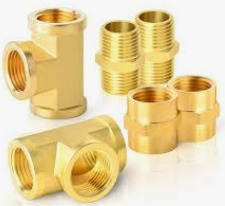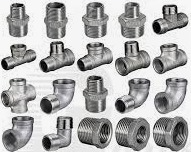Hydraulic fittings make power flow smoothly in many machines and systems. They are unsung heroes. These parts make sure hydraulic fluid flows correctly and effectively.
In this guide, we explore the shift from brass to stainless steel hydraulic fittings. We learn why it happened and how it affects industries and applications.
The Transition from Brass to Stainless Steel
Stainless steel hydraulic fittings are becoming more popular and replacing traditional brass fittings. The hydraulic industry is changing. This guide explains the transition and how it affects hydraulic systems worldwide in detail.
In the next pages, you’ll learn about brass and stainless steel hydraulic fittings. We’ll talk about their advantages, limitations, and how they’re used in different industries. In this article, we will explain why stainless steel is replacing brass. We will also give real-life examples to show how it affects us.
Brass as a Hydraulic Fitting Material
Brass, an alloy of copper and zinc, has been a stalwart in the hydraulic industry. It’s known for its corrosion resistance and malleability, but it has certain limitations.
➡️ Types of Brass Hydraulic Fittings
There are different kinds of brass hydraulic fittings, like compression, flare, and pipe fittings. Understanding their specific uses is crucial in making informed choices.
➡️ Advantages and Disadvantages
Brass fittings don’t corrode easily, but harsh conditions can damage them through dezincification. It’s essential to comprehend the full spectrum of their advantages and limitations.
Stainless Steel Hydraulic Fittings: An In-Depth Look
➡️ The Superiority of Stainless Steel
Hydraulic fittings often use stainless steel because it is strong, durable, and doesn’t corrode.
➡️ Types of Stainless Steel Hydraulic Fittings
You can find various stainless steel hydraulic fittings such as couplings, adapters, and tube fittings. These forms are designed for specific uses. Their ability to adapt is demonstrated by their diversity.
➡️ Benefits and Limitations
Stainless steel hydraulic fittings excel in durability and corrosion resistance. However, aluminum is not as flexible as brass, so it is more suitable for certain uses.
The Brass-to-Stainless Steel Shift
➡️ The Drive for Improved Performance
To improve performance and durability, hydraulic systems now use stainless steel instead of brass.
➡️ Factors Influencing the Transition
Aggressive industry, high-pressure hydraulics, and less maintenance cause the transition.
➡️ Sustainability and Longevity
Stainless steel fittings are very strong and last a long time. This means you don’t have to replace them often, which is good for the environment.
Comparing Brass and Stainless Steel Hydraulic Fittings
➡️ Corrosion Resistance and Durability
Brass fittings can rust in tough conditions. However, stainless steel hydraulic fittings won’t rust.
➡️ Strength and Temperature Tolerance
Stainless steel fittings are very strong and can handle different temperatures. This makes them good for extreme conditions.
➡️ Cost-Efficiency and Environmental Impact
At first, stainless steel fittings cost more. However, they save money and benefit the environment in the long run.
Applications in Various Industries
➡️ Hydraulic Systems and Fluid Power
Hydraulic systems often use stainless steel fittings. These fittings are durable and don’t corrode easily.
➡️ Aerospace and Automotive Hydraulics
Stainless steel fittings in aviation and cars must perform to meet safety standards.
➡️ Marine and Offshore Hydraulic Applications
Stainless steel is useful for marine and offshore industries. It can handle saltwater and tough conditions.
Installation, Maintenance, and Best Practices
➡️ Proper Installation Techniques
To prevent leaks, be sure to install brass and stainless steel hydraulic fittings correctly.
➡️ Routine Maintenance and Inspection
Regular maintenance and inspections can make fittings last longer and prevent costly downtime.
➡️ Ensuring Longevity and Performance
To make fittings last longer and work better, you must store, handle, and care for them correctly.
The Environmental Perspective
➡️ Sustainability in Hydraulic Systems
Stainless steel hydraulic fittings contribute to sustainability by reducing replacements and environmental impact.
➡️ Recycling and Eco-Friendly Practices
The recycling process for stainless steel is efficient and enhances its environmental credentials.
➡️ Reducing the Carbon Footprint
To protect the environment, we can use stainless steel fittings and lower our carbon footprint.
Conclusion
➡️ Embracing the Evolution
Switching from brass to stainless steel hydraulic fittings meets modern industrial needs. Choosing the right hydraulic fittings is important for reliability, cost-effectiveness, and sustainability.
➡️ Making Informed Hydraulic Fitting Choices
People can make better choices by understanding the pros and cons of brass and stainless steel fittings.
➡️ Stainless Steel’s Role in a Sustainable Future
Hydraulic systems use stainless steel fittings to lessen environmental impact.
Post time: Nov-29-2023



